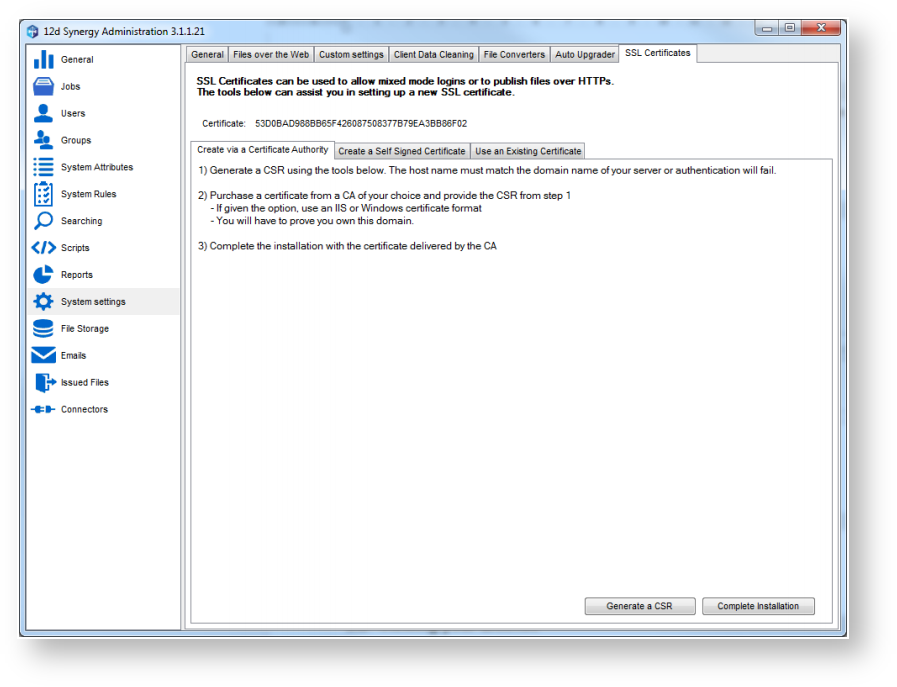1.1 Overview
If you are using Custom Authentication, or wish to use HTTPS, you may need to setup x509/SSL Certificate. SSL refers to Secure Socket Locker, and x509 Certificates are the mechanism by which this is achieved.
This is an industry standard process for applying encryption, and uses a third party to help
- Identify the server you are connecting to
- Encrypt the data
1.2 Setting up a Certificate

Setting up an SSL Certificate can be a complicated process and should involved your IT group. It is important to realise that as SSL Certificates are used for identity, they must match the domain entered by the user / used as a publishing link.
There are three options:
- Create via a Certificate Authority
- Create a Self Signed Authority
- Use an existing certificate
- Create via a Certificate Authority
A certificate Authority is a third party group, such as version, who can provide you with a valid certificate. To do so, you must:- Generate a Certificate Signing Request using the button on the form
- Complete the required details
- Supply the CSR to your Certificate Authority (CA)
- Download the supplied certificate and complete the installation
You must then restart the 12d Synergy Server to use this certificate.
- Create a Self Signed Authority
It is possible to create a self signed certificate, which means generate your own. However, this will not automatically trusted by external parties. Users trying to connect to your server, or download a file, may be presented with a warning to validate the security of your server. - Use an existing certificate
If you have previously bought a certificate and installed it, you must make sure it is in the Local Machine / Personal store on the server. If it is, you can get the Hash from the Microsoft Certificate Store and apply it here.
You must then restart the 12d Synergy Server service to use this certificate.